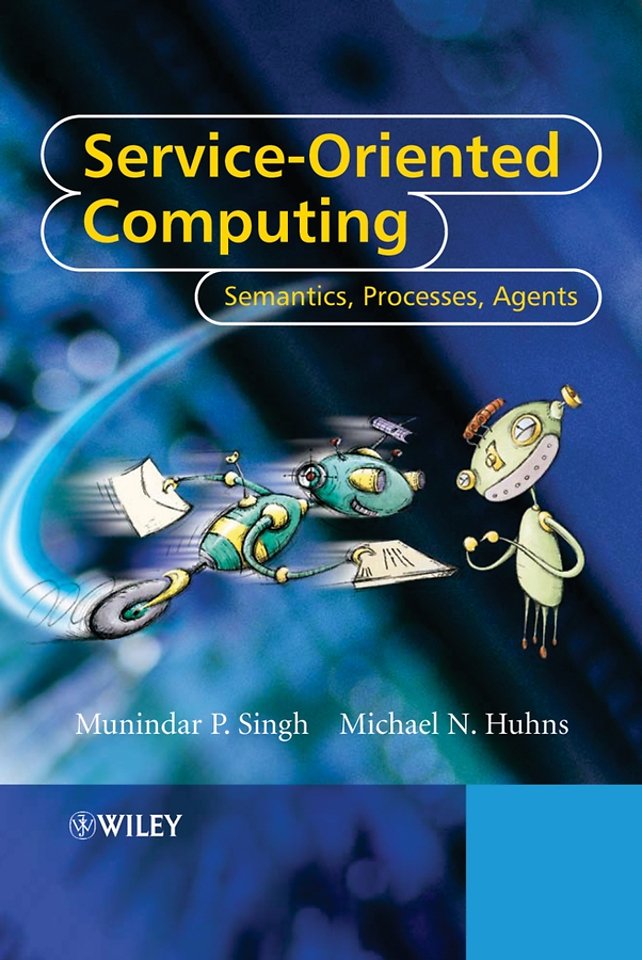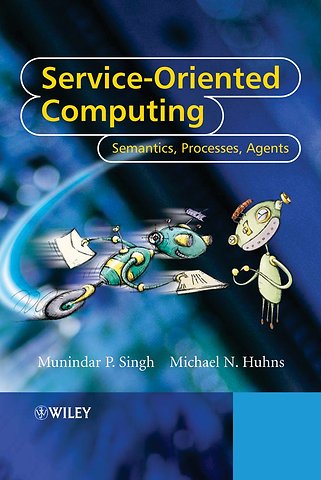Service–Oriented Computing
Semantics, Processes, Agents
Samenvatting
This comprehensive text explains the principles and practice of Web services and relates all concepts to practical examples and emerging standards. Its discussions include:
Ontologies
Semantic web technologies
Peer–to–peer service discovery
Service selection
Web structure and link analysis
Distributed transactions
Process modelling
Consistency management.
The application of these technologies is clearly explained within the context of planning, negotiation, contracts, compliance, privacy, and network policies. The presentation of the intellectual underpinnings of Web services draws from several key disciplines such as databases, distributed computing, artificial intelligence, and multi–agent systems for techniques and formalisms. Ideas from these disciplines are united in the context of Web services and service–based applications.
Featuring an accompanying website and teacher s manual that includes a complete set of transparencies for lectures, copies of open–source software for exercises and working implementations, and resources to conduct course projects, this book makes an excellent graduate textbook. It will also prove an invaluable reference and training tool for practitioners.
Specificaties
Inhoudsopgave
<p>Preface.</p>
<p>Note to the Reader.</p>
<p>Acknowledgments.</p>
<p>Figures.</p>
<p>Tables.</p>
<p>Listings.</p>
<p>I Basics.</p>
<p>1. Computing with Services.</p>
<p>2. Basic Standards for Web Services.</p>
<p>3. Programming Web Services.</p>
<p>4. Enterprise Architectures.</p>
<p>5. Principles of Service–Oriented Computing.</p>
<p>II Description.</p>
<p>6. Modeling and Representation.</p>
<p>7. Resource Description Framework.</p>
<p>8. Web Ontology Language.</p>
<p>9. Ontology Management.</p>
<p>III Engagement.</p>
<p>10. Execution Models.</p>
<p>11. Transaction Concepts.</p>
<p>12. Coordination Frameworks for Web Services.</p>
<p>13. Process Specifications.</p>
<p>14. Formal Specification and Enactment.</p>
<p>IV Collaboration.</p>
<p>15. Agents.</p>
<p>16. Multiagent Systems.</p>
<p>17. Organizations.</p>
<p>18. Communication.</p>
<p>V Solutions.</p>
<p>19. Semantic Service Solutions.</p>
<p>20. Social Service Selection.</p>
<p>21. Economic Service Selection.</p>
<p>VI Engineering.</p>
<p>22. Building SOC Applications.</p>
<p>23. Service Management.</p>
<p>24. Security.</p>
<p>VII Directions.</p>
<p>25. Challenge and Extensions.</p>
<p>VIII Appendices.</p>
<p>Appendix A: XML and XML Schema.</p>
<p>Appendix B: URI, URN, URL and UUID.</p>
<p>Appendix C: XML Namespace Abbreviations.</p>
<p>Glossary.</p>
<p>About the Authors.</p>
<p>Bibliography.</p>
<p>Index.</p>

